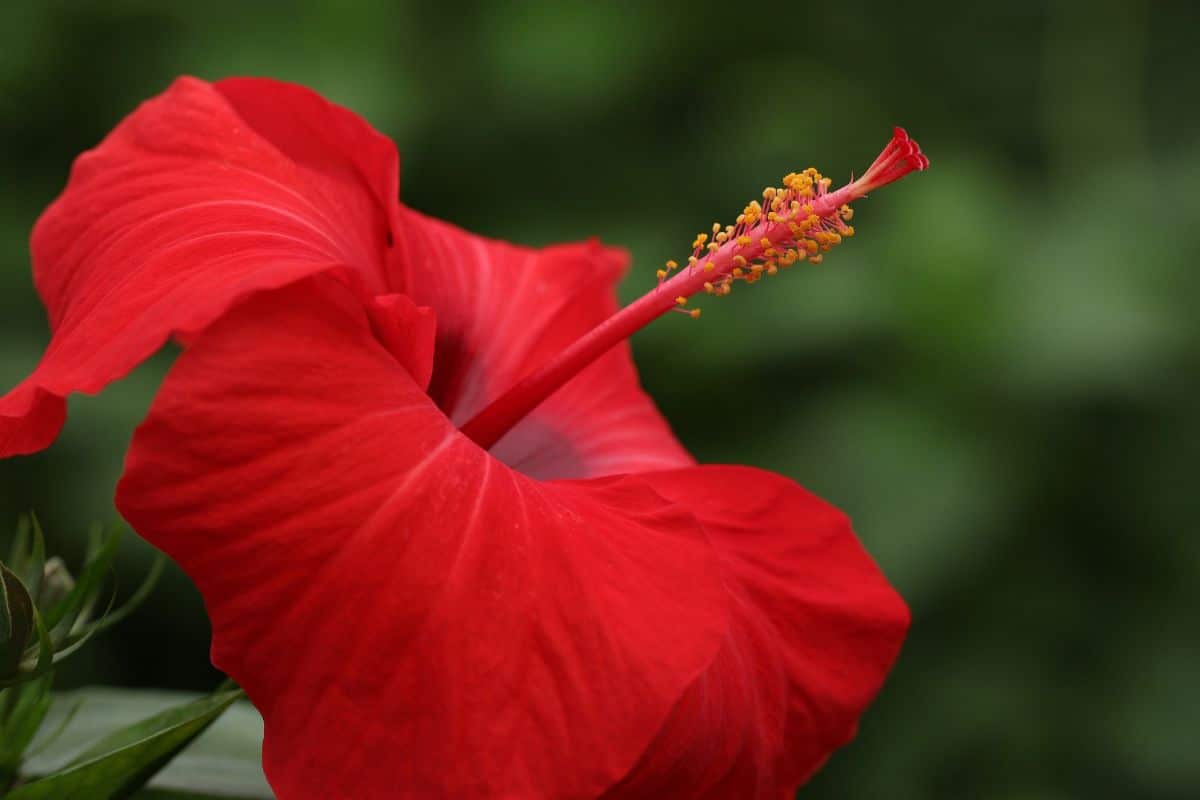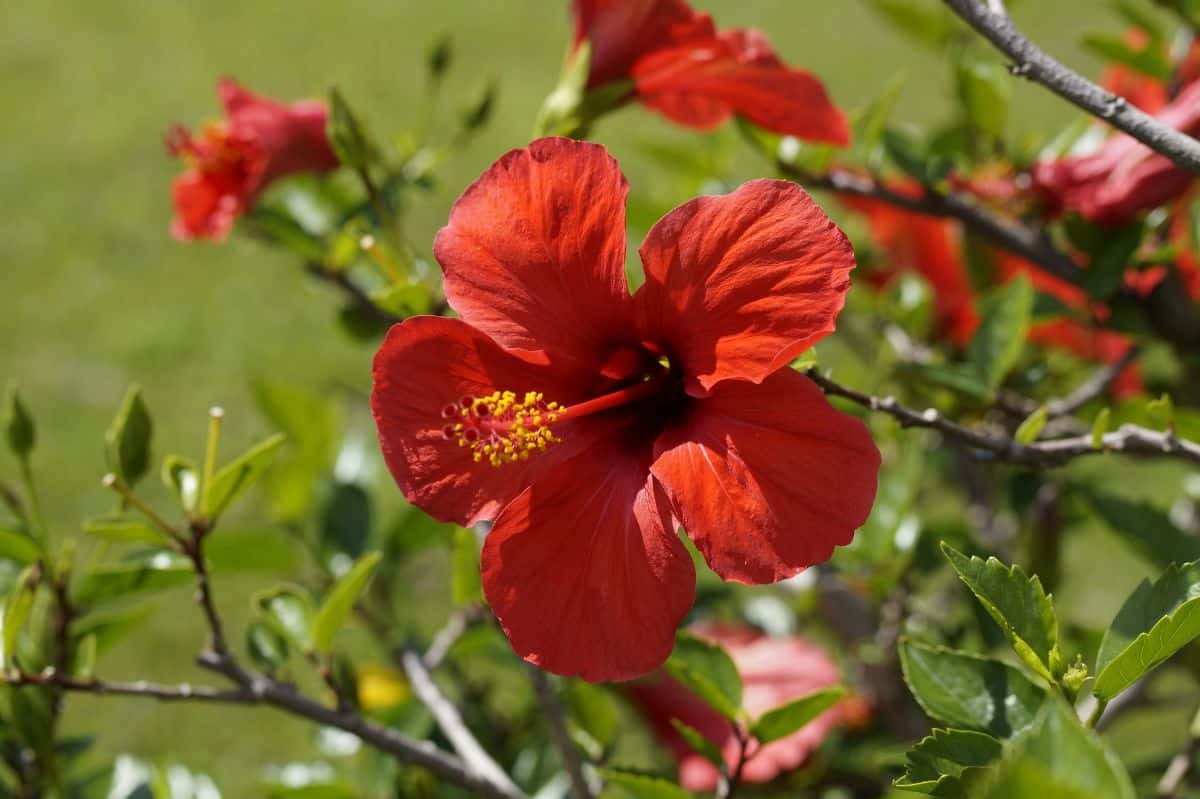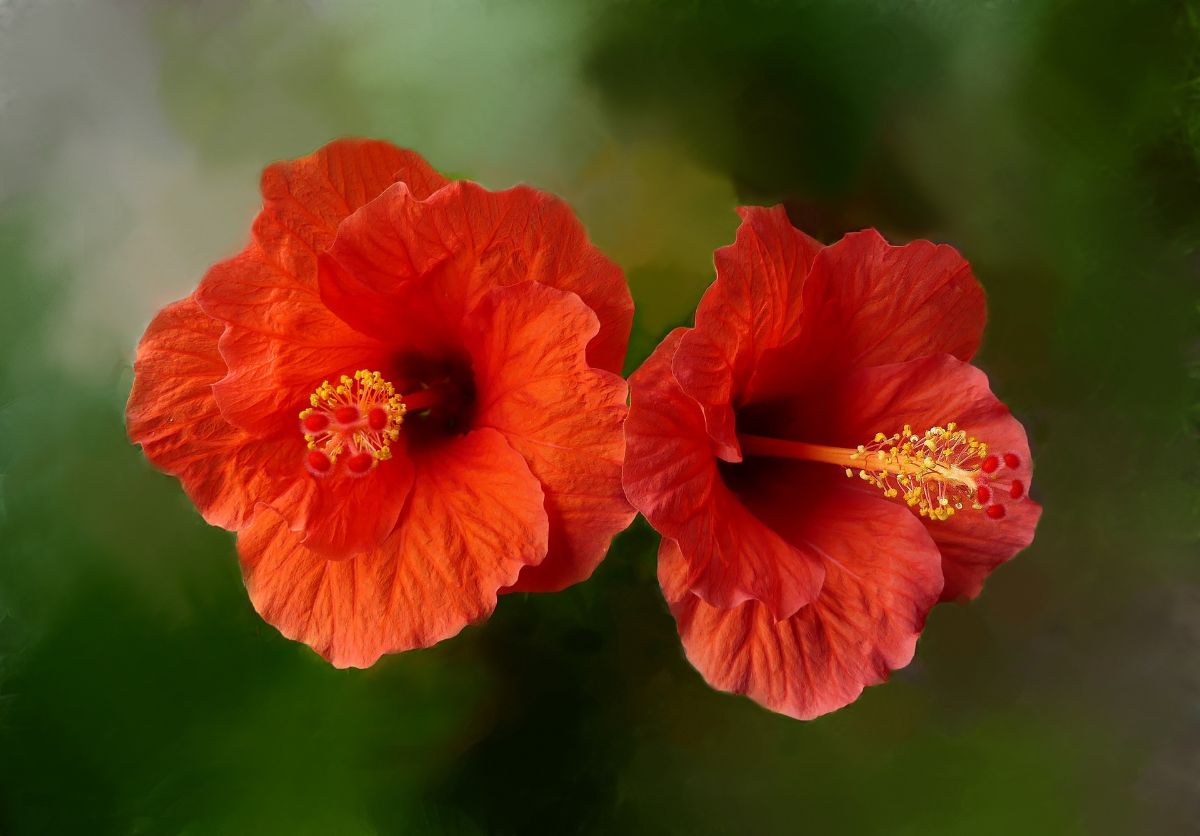
The red hibiscus is one of the most beautiful plants in the world. The beauty of its flowers makes many want to have it in their homes, although the care it needs is not easy for everyone.
Therefore, this time we are going to give you the keys so you know what all the care of red hibiscus are and, in this way, you can have it in your home and enjoy some impressive flowers. Do you dare to it?
How is the red hibiscus

Before knowing what are the basic and necessary care for the red hibiscus, we want you to know what its characteristics are.
This plant reaches reach 2 meters in height, being perennial and with quite large leaves, oval in shape and dark green. However, the most characteristic are its flowers, with a diameter of between 7 to 15 centimeters, cup-shaped and in clusters. These can be red, but there are also pink, white, purple or orange.
Its origin is in Asia and Africa., where they are used decoratively, especially in gardens and parks, but also have medicinal properties. For example, it is used to treat skin, heart, or digestive system problems. It is even used as a diuretic, or to reduce fever.
Red hibiscus care

If you want to have a red hibiscus at home, before going out to buy it, we recommend that you read the care guide that we have prepared for you because, in this way, you will know exactly what you need and thus you will have more opportunities to succeed and don't die.
Pay attention because these are the most important care.
Location and temperature
We must start by telling you that the red hibiscus is a hardy plant and needs sun exposure of at least 6 hours a day to flourish optimally. Therefore, we do not recommend that you put it in the shade because that will only harm the plant and cause it to wither and not flower. Always place it in a semi-shaded area or in full sun (unless the temperature is very high or the sun burns a lot, that is its best location).
As for the temperature, it is relatively Frost resistant and can tolerate quite low temperatures. However, it is important to avoid exposing the plant to temperatures that are too low, as this can affect its growth and flowering. The best thing is that it is in an area where there are no wind currents, much less if it is cold. If you are outside and it is very cold, it is best to cover it to avoid problems.
Keep in mind that red hibiscus needs a warm temperature to flower optimally. It is generally recommended to keep the plant at a temperature around 20 to 25 degrees all year round (You can get it, for example, in a greenhouse, or if you are in a temperate climate). If the plant is exposed to very low temperatures for a prolonged period of time, it may stop flowering or even die.
Irrigation
Although the red hibiscus is relatively resistant to drought, the truth is that you will have to worry about watering it regularly, since if it lacks water, the plant withers very quickly.
En general, you can water it 1-2 times a week. But it all depends on its location, climate, season, type of substrate... since all of this can make it need more water or not. Start by watering little and observing the plant since each one will have its needs and thus you will be able to find the right point for your plant.
Yes, also take into account the humidity of the environment to ensure that you do not water it more if the humidity is high.
Pruning
It is important to prune the red hibiscus regularly to keep the plant in shape and encourage flowering. We recommend you prune faded flowers and shoots that grow too large or that protrude from the desired shape of the plant.
Substratum
The red hibiscus adapts to different types of soil, but its preference is those that are well drained and rich in nutrients. Be sure to add compost or organic fertilizer when you plant it (if you do it in the garden) and give it a little fertilizer every year for its flowering. This way you will always replenish your nutrients.

Plagues and diseases
The first thing you should know is that the red hibiscus is relatively resistant to diseases and pests, but it can be attacked by aphids, aphids and mealybugs.
In the case of aphids and aphids, you will have to use specific insecticides to remove them from the plant, or do it manually (or a combination of both). While with mealybugs it is best to start manually, removing all the bugs you see, and then applying a treatment.
As for the diseases, it is necessary to take into account the mould, a fungus that thrives in damp areas and can affect you. It can be prevented through moisture control and proper ventilation, and it can be treated through the use of fungicides.
Another disease is the rot, which occurs when the red hibiscus receives too much water or is exposed to temperatures that are too low. To prevent it, you have to control irrigation as well as temperatures and treat it with a fungicide.
Multiplication
There are several ways to multiply the red hibiscus such as:
- Seeds: this method is quite difficult and does not always produce plants with the same characteristics as the mother plant. To propagate red hibiscus from seed, sow the seeds in a pot with moist soil and cover it with clear plastic to create a warm, humid environment. The seeds must be at 20-25 degrees so that they can germinate.
- Cuttings: more reliable to multiply. To do this, a young shoot is cut from the mother plant and planted in a pot with moist soil. This cutting should have 2-3 pairs of leaves, and make sure that you have cut below a node or bud so that the seeds come from there.
- Division: Finally, you have the division, that is, separate the mother plant. To do this, you must extract the plant from its pot or from the ground and divide it into several parts with a knife or spade. Each of the divided parts is planted in a pot or in the ground with enough room for each to have its own root system.
As you see, the cRed hibiscus care is special but not too hard to give.. Would you dare to have one in your house?